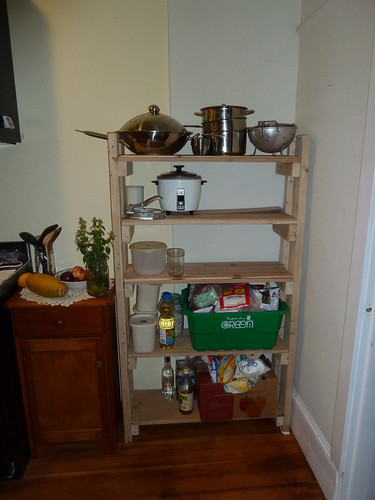I have completed a project that I conceived at CanaDam, the Canadian Discrete Math Conference at the University of Victoria. After getting the geometry wrong once, and making several smaller prototypes, I have finally made one as large as possible, given the dimensions of the laser cutter at the MakerSpace in Victoria, BC.
The sculpture is made of clear acrylic and skewers that have been coloured with Rit Dye. The pedestal is a boxed set of Knuth's, "The Art of Computer Programming", volumes 1-3, third edition.
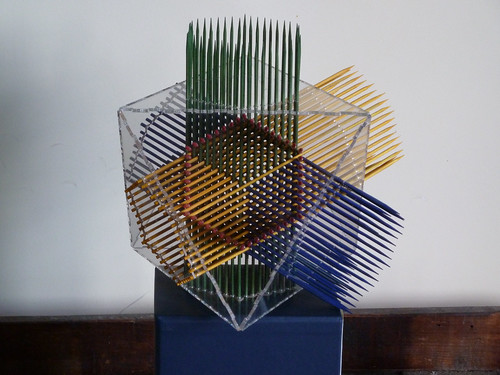
I hope to suspend it and project its shadow onto a screen. More photos will follow in the coming weeks.
When I am finished, the Hexastix in an Octahedron will go to auction, and part of the proceeds will go to Oxfam
Special thanks to George Hart for his 72 Pencils, and to Matt DeVos, who showed me how to make my own in Winter 2010.
Last weekend I saw a mini glass flameworking (lampworking) workshop at Mini Makerfaire in Vancouver. I didn't get a chance to try it, but it looks like fun, and something that is perfect for a place like the MakerSpace, here in Victoria BC. The workshop and materials were provided by ootay glass.
The craft involves heating glass rods (and beads?) in front of a torch, and sticking different coloured pieces together. Here are some nice results from wikipedia:

Here are some people doing it at Mini Makerfaire Vancouver
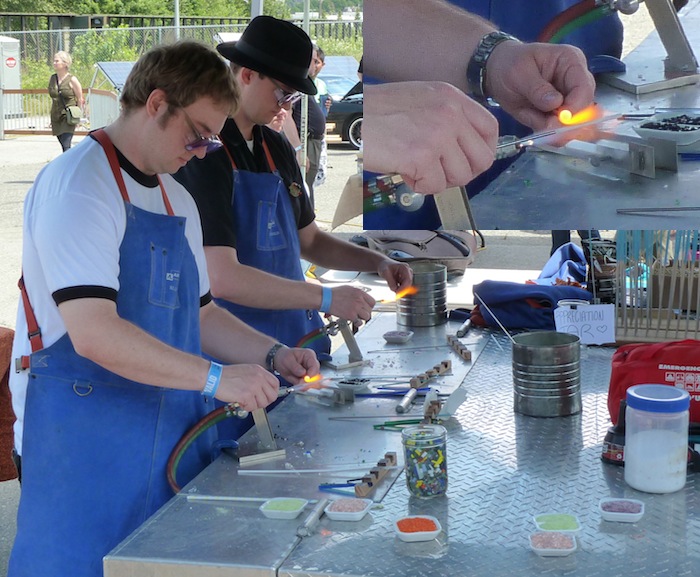
The workshop providers had an array of materials.
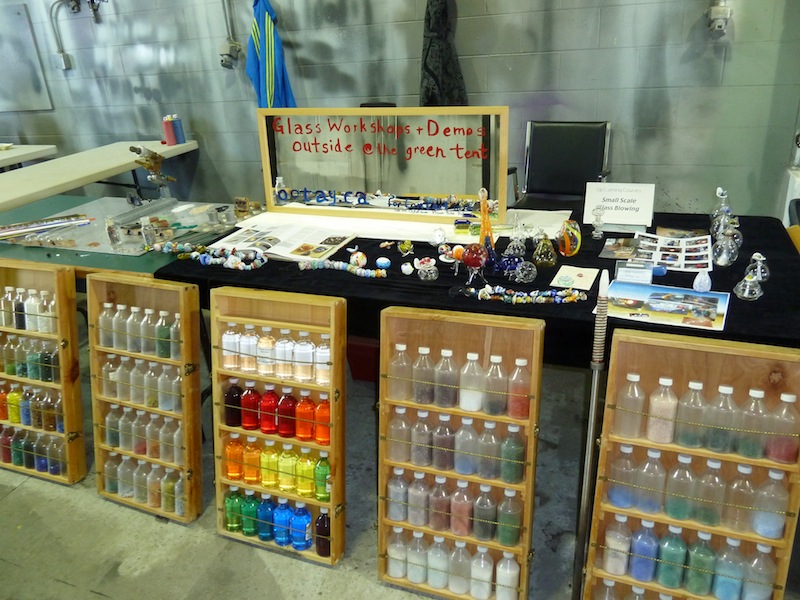
I was at Mini Makerfaire in Vancouver last weekend, and I came across a booth presenting a very interesting vest. The Point Locus Wearable Tactile Pathfinder is a vest which reads GPS data, and vibrates on the wearer's shoulders to indicate the direction they should take along a path to a destination. The vest should be used in tandem with a guide dog or some other tool to navigate obstacles, whenever the device is used by the blind.
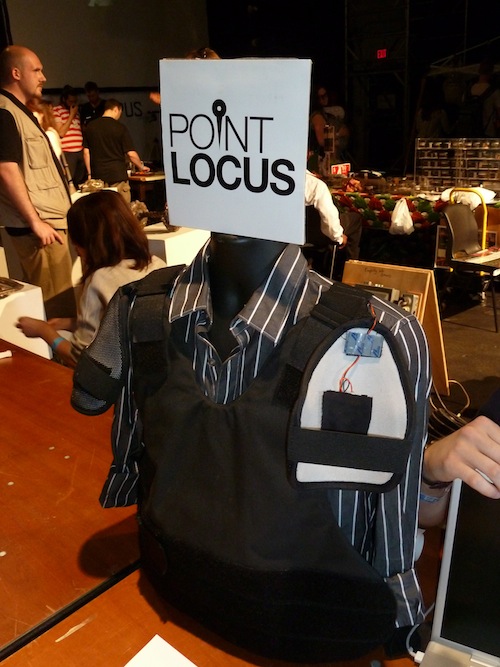
Over seven months after building my first Hexastix, a geometrical sculpture introduced to me by Matt DeVos, and originally by George Hart, I was finally graced with the opportunity to teach it to a group of keen teenagers. My students, who were participants in Math Camp at the University of Victoria, found the activity very engaging and a bit challenging. In the one hour time slot, each of 16 students built a hexastix using approximately 48 3mm x 8cm coloured skewers, and they continued to work eagerly through their 30 minute break to expand their sculptures to about 72 skewers.

Producing high quality, colourful materials efficiently was the main challenge. Three millimetre thick skewers do not come in 8cm lengths, but skewers typically fray when they are cut with a saw. Efficient cutting was done with a stack paper cutter, like the one at All Image Printing, which cuts ten skewers at a time with little to no fraying, and very little time between precise cuts. Rit Dye was used to colour the skewers. It is not food safe, of course, but the bold colours are magnificent compared to results obtained with Kool-aid or food colouring. Lastly, I provided small elastics and white glue.
It takes just under one hour to get students started on the Hexastix, but managing a large group is not difficult because students help each other. I did not have access to a data projector or document camera. I am still working on producing an instruction booklet for hexastix, however, I more or less followed the method in a video I made a few months ago (below, using toothpicks rather than skewers). I emphasized that each colour represents a direction, and it is important to be able to identify, at first, the first colour that was added. That colour has 7 sticks, which are separated by each other colour into sets of 2, 3, and 2 sticks (I made diagrams and showed them). The most helpful type of diagram was one of the ends of the first colour sticks, showing the directions of the 2nd, 3rd and 4th colours, as they relate to the first.
The most difficult part is adding the first stick of the 4th colour, which is shown in the video, above. I had to do this for most of the students, but if I had a data projector, or a prepared diagram or video, it would have been easier.
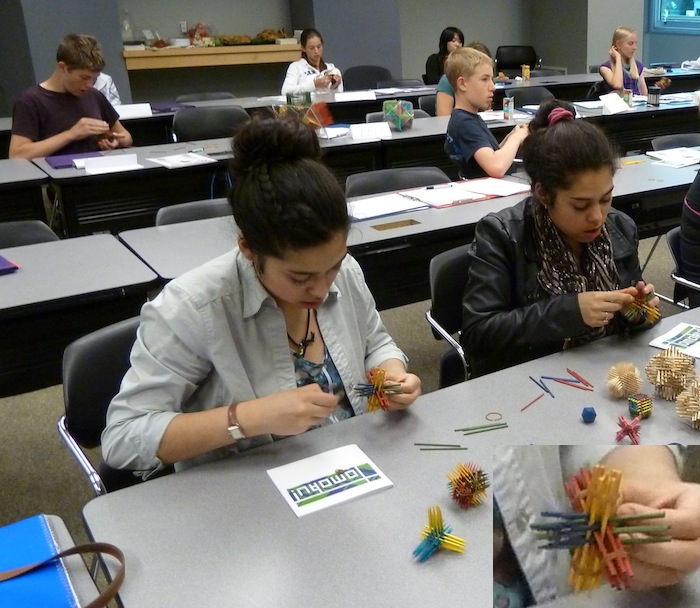
The Hexastix was a great ice breaker for math camp students, because they worked in groups to help each other interpret the instructions. Mixing colours, and various options for shape and style allows for variety and innovation, while the Hexastix structure gives direction and, optionally, some mathematics to teach them.
I believe that the intersection of art and geometry is a great way to get many young people keen on math. A point that is frequently ignored in the teaching of math at the pre-undergraduate level, is that higher math is in many ways a creative art. We impose rhythm and such on music, and various other aesthetics on other creative arts. In mathematics we impose logical rules, and try to find “nice”, and ever increasingly complex, statements that satisfy those rules. Perhaps geometric art is the pop music of math. It pleases our eyes, and sparks our curiosity. It doesn’t just lead more people to want to learn more math, but it increases the appeal of math, garnering more allies for our cause.
It was reported to me that the students said building the hexastix was their
favourite activity at math camp this year.
Here is a video I posted on how to dismantle a pallet without splitting the wood (video). I made a set of shelves with it and some recovered 2x4s.
